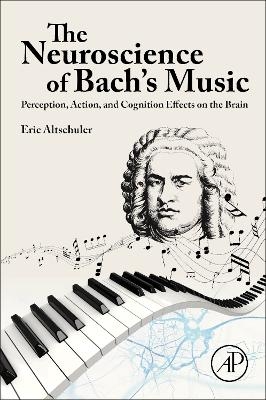
The Neuroscience of Bach’s Music
Academic Press Inc (Verlag)
978-0-443-13519-4 (ISBN)
Eric Altschuler, MD, PhD is Associate Chief and Director of Clinical Research in the Department of Physical Medicine and Rehabilitation at Metropolitan Hospital and Associate Clinical Professor in the Department of Rehabilitation Medicine at New York Medical College. Dr. Altschuler is also an Associate Editor of the American Journal of Physical Medicine and Rehabilitation. Dr. Altschuler is board certified in Physical Medicine and Rehabilitation, Brain Injury Medicine, Neuromuscular Medicine and Electrodiagnostic medicine. In addition to clinical work in general PM&R and electro-diagnostics, Dr. Altschuler is a widely published and recognized expert in clinically applied and basic cognitive neuroscience. Dr. Altschuler was the first to report the use of mirror therapy for hemiparesis following stroke and for a combination amputation/orthopedic injury. Dr. Altschuler was the first to publish the use of animal assisted therapy for post-traumatic stress disorder (PTSD) now in wide use for patients across the world.
Section 1: Prelude
1. Introduction
2. Background and Overview of Johann Sebastian Bach
3. Basics of the Brain and Perception
Section 2: Playing Bach and the Brain – Action
4. Playing Bach’s Suites for Solo Cello and Experiencing One’s Actions without Perception and Clocking Libet’s “Mind Time
5. Neural Performance, Action Requirements, and Challenges of Playing Bach’s Concerto for Two Violins – A Study of Synchronization and Perceptual Experience
6. Adding a Third Violin to Bach’s Brandenburg Concerto No. 6 – Challenges in Synchronization and Listener Experience
7. More than Three – Perceptual, Action, and Cognitive Challenges for Performers and Listeners
8. Virtuoso of Bach’s Composing and Performance Expectations
Section 3: Listening to Bach – Perception of Musical Space and Landscape
9. The Neuroscience of “Affekt – Music, Emotions, and the Brain’s Limbic System
10. “Affekt Related to Tempos and Effects – Bach’s Composition and Emotional Playing
11. The Algebra of Bach’s Transcriptions for Various Instruments and Cognitive Effects
Section 4: Bach and the Exploration of the Tonal System and Beyond – Cognition
12. Parallel Fifths and the Cognitive-Perceptual System
13. Enharmonic Notes Across Instruments in Bach’s Compositions
14. Modal Traces and the Cognitive-Perceptual System
15. Bach’s 12-Tone Row, Cognition, and Musical Perception
16. Present and Future Neuroimaging Studies of Bach
Section 5: Mathematical Bach
17. Topology in Bach I – The Brain’s Analysis of Bach’s Match to a “Möbius Strip Structure
18. Topology in Bach II – The Brain’s Ability to Hear Topologic Structures
19. Unbroken and Broken Symmetry in Bach’s Compositions
20. The Perceptual Effect of Escher’s “Tiling Time
Section 7: Conclusion
21. Bach and the Brain’s Action, Perception, and Cognition – Summary and Future Applications and Implications Appendix Using Perceptual and Cognitive Approaches to Finding and Using Bach’s Tempos
| Erscheinungsdatum | 17.02.2024 |
|---|---|
| Verlagsort | San Diego |
| Sprache | englisch |
| Maße | 152 x 229 mm |
| Gewicht | 560 g |
| Themenwelt | Naturwissenschaften ► Biologie ► Humanbiologie |
| Naturwissenschaften ► Biologie ► Zoologie | |
| ISBN-10 | 0-443-13519-3 / 0443135193 |
| ISBN-13 | 978-0-443-13519-4 / 9780443135194 |
| Zustand | Neuware |
| Informationen gemäß Produktsicherheitsverordnung (GPSR) | |
| Haben Sie eine Frage zum Produkt? |
aus dem Bereich


